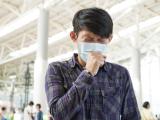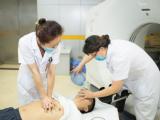Mar 18, 2003 (CIDRAP News) - With perfect timing inview of the current global outbreak of a mysterious respiratory disease, the Institute of Medicine today released a report calling on the United States to take the lead in addressing infectious disease threats around the world as well as at home.
The nation should work to build a global surveillance andresponse system for infectious diseases, especially in the developing world,says the report, titled "Microbial Threats to Health: Emergence, Detection,and Response."
In a press briefing, authors of the report cited the current outbreak of "severe acute respiratory syndrome" (SARS) as a great exampleof the types of problems the document addresses. The outbreak of a nonidentified influenza-like illness has reached 219 cases, with four deaths, in China, Hong Kong, Vietnam, Canada, and elsewhere, federal officials said today.
"As SARS so vividly demonstrates, national borders offer little impediment to such threats. One nation's problem can soon become every nation's problem," said Margaret Hamburg, vice president for biological programs at the Nuclear Threat Initiative and co-chair of the IOM committee that wrote the IOM report.
Ruth Berkelman, MD, a member of the committee, called SARS a "clear illustration" of needs cited in the report, including early detection and rapid diagnosis of emerging infections. "The earlier we understand these diseases, pick them up and investigate what's going on, the earlier we can do something about them," said Berkelman, a professor of microbiology at Emory University in Atlanta.
The new report is a sequel to the 1992 IOM report EmergingInfections: Microbial Threats to Health in the United States, which warned against complacency about infectious diseasesand called them a potential threat to national security. "A decade later the impact of infectious diseases on the United States has only increased," states the new report's summary. Since 1992, new diseases such as West Nile virus encephalitis and hantavirus pulmonary syndrome have emerged, while old diseases such as measles, malaria, and sexually transmitted diseases persist.
The report includes 21 recommendations. Besides global efforts, the committee calls for a numerous efforts at home, including:
- A national strategy to maintain the arsenal of vaccines and antimicrobial drugs
- Several measures to improve antimicrobial use and control bacterial resistance, including increased use of diagnostic tests and a ban on the use of antibiotics to promote animal growth if the drugs are needed in human medicine
- Education and training of "the microbial threat workforce"
- A comprehensive infectious disease research agenda
- The establishment of interdisciplinary infectious disease centers
Hamburg commented, "I think that most of the recommendations in this report are familiar to those working in this field. . . . It's not that the message is necessarily that new, but the urgency is increasing."
In a separate press briefing today, James Hughes of the Centers for Disease Control and Prevention (CDC) hailed the report as a call to action. Of the 21 recommendations in it, two thirds are directed wholly or partly at the CDC, said Hughes, who directs the National Center for Infectious Diseases. He added, "This current ongoing experience [with SARS] drives home in spades the importance of the recommendations made in this report." Hughes said the CDC knew of nine suspected SARS cases in the United States today, down from 14 yesterday.
The report says the secretary of health and human services should provide for a national vaccine strategy to protect the country from microbial threats. "Only by focusing leadership, authority, and accountability at the cabinet level" can the federal government accomplish this, the report states.
Hamburg said the committee "was deeply concerned about the current and future arsenal of drugs and vaccines" for combating microbial threats. The challenges are many and complex, she said, and "until now, the federal government has neither addressed these challenges at a sufficiently high level nor provided adequate resources." But the authors did not suggest specific incentives for the development of drugs and vaccines, regarding that task as beyond their expertise and charge, Hamburg said.
To ensure appropriate use of antimicrobials, the report calls for "the increased use of diagnostic tests, as well as the development and use of rapid diagnostic tests" to identify the causes of infections. An IOM news release said that "etiological diagnoses have decreased significantly" in the past decade, resulting in overuse of broad-spectrum antibiotics and increased microbial resistance.
Iowa State Epidemiologist Patricia Quinlisk, a member of the author committee, said healthcare providers often don't use available tests to identify infections. For example, she said, "We recently had a busload of wrestlers and they all had diarrhea, and not one single diagnostic test was done."
Another committee member said the call to ban the use of antibiotics for promoting animal growth was "the easiest recommendation for the group to come to consensus on," because the evidence regarding the contribution of this practice to resistance was "quite compelling."
In response to questions, Hamburg said the committee did not try to estimate how much it would cost to carry out the recommendations in thereport. "Certain of the recommendations are not so much dollar investmentas political and social will," she said. "We are putting them forward as a potential framework for investment to better prepare our nation for the threat of infectious diseases."
See also:
National Academies of Science news release describing the report
http://www8.nationalacademies.org/onpinews/newsitem.aspx?RecordID=10636
National Academies page with links to report summary and full text
http://www.nationalacademies.org/




















